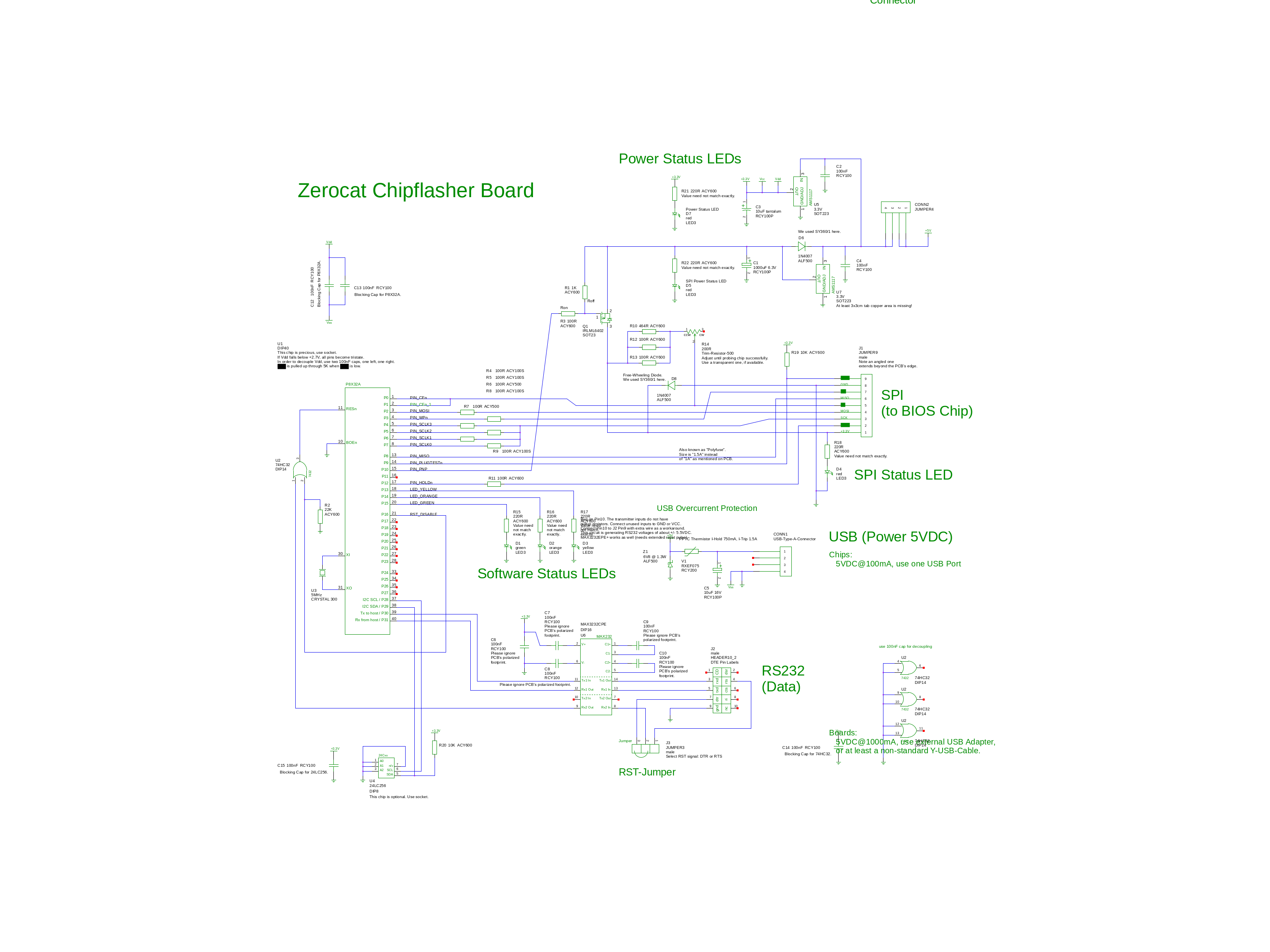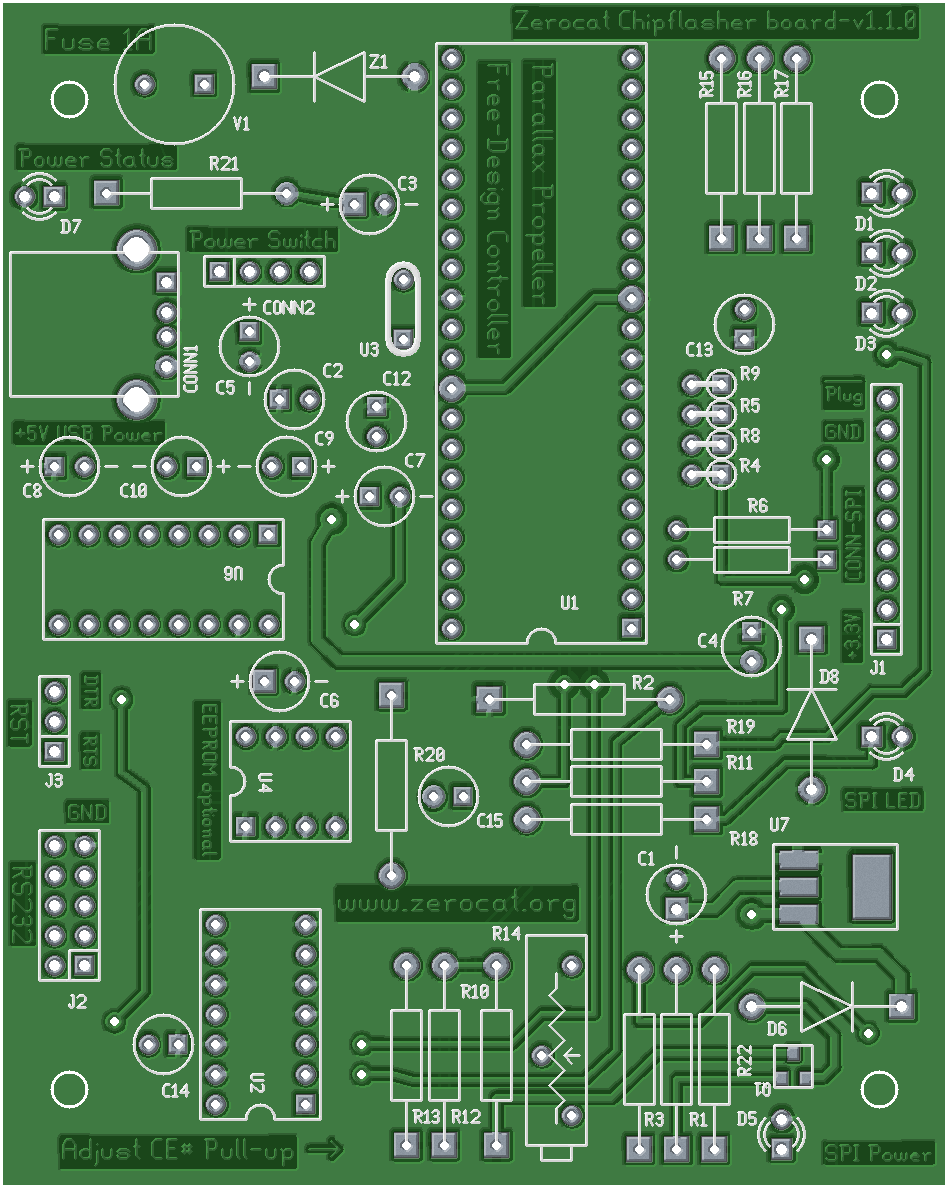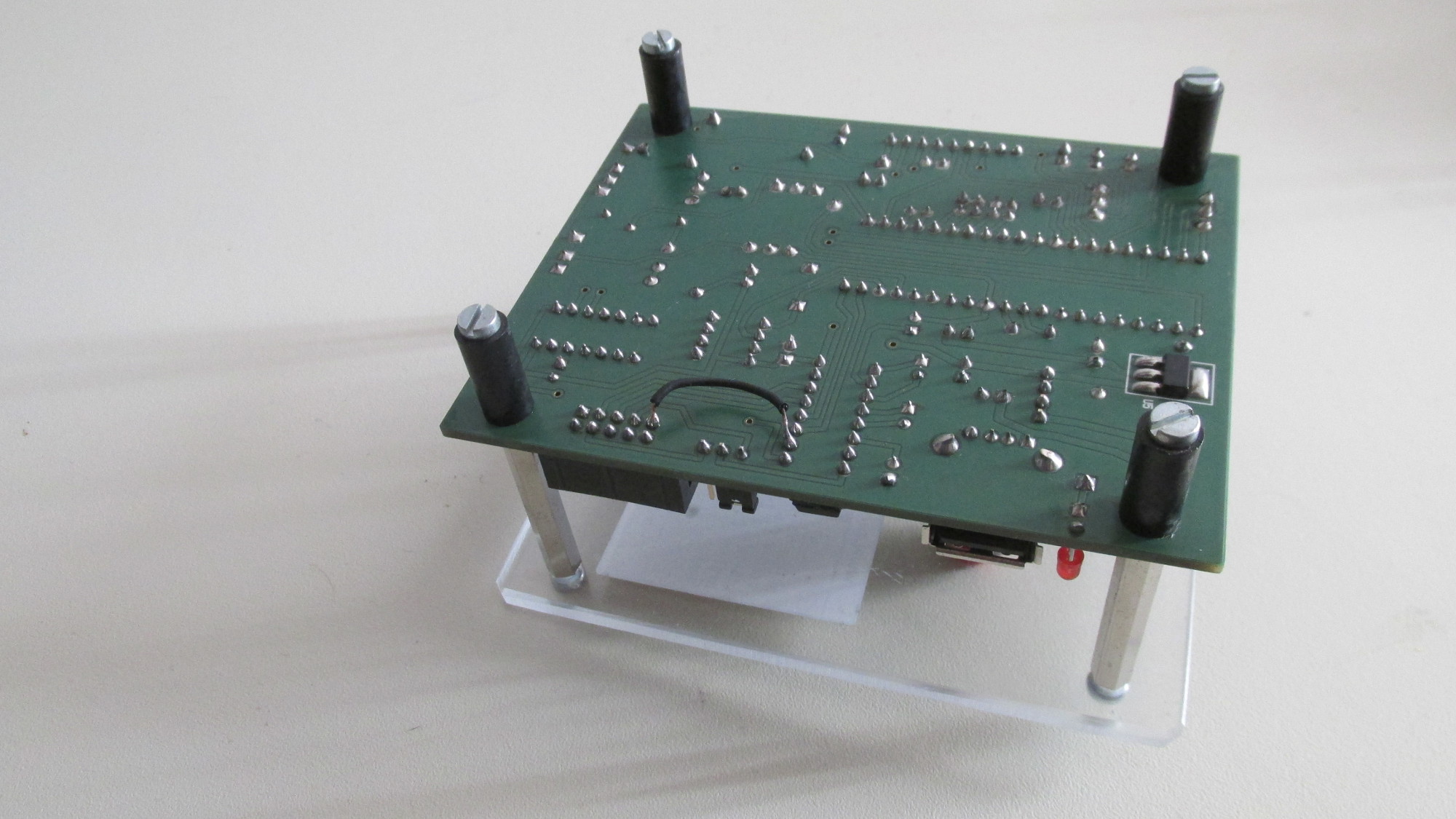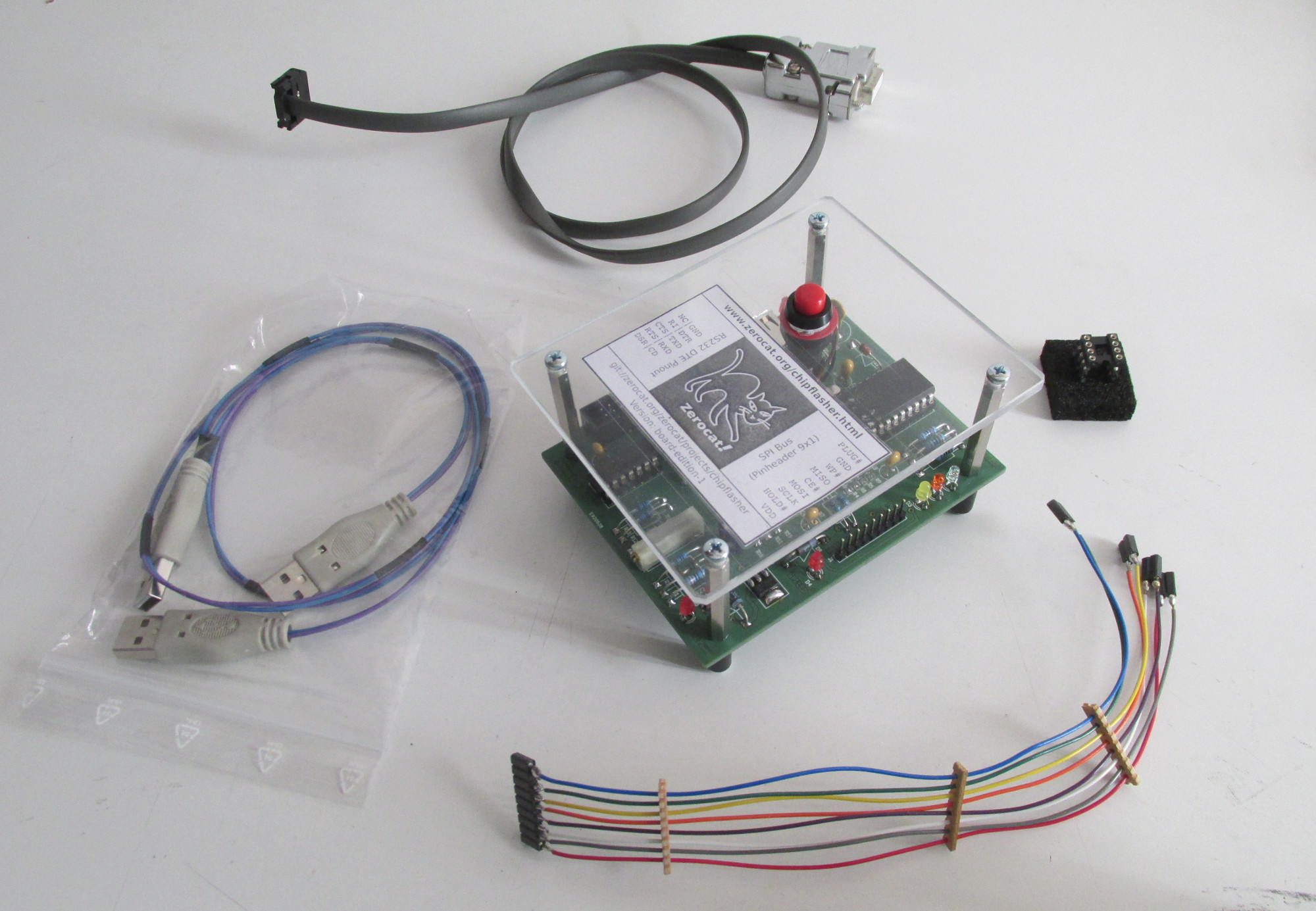 |
Zerocat Chipflasher Board
v0.4.3 (board-edition-1)
True Free-Design Hardware and Do-it-Yourself!
|
 |
Zerocat Chipflasher Board
v0.4.3 (board-edition-1)
True Free-Design Hardware and Do-it-Yourself!
|
Our first flashers have been created from scratch. Every detail has been placed thoroughly and finally it turns out that these devices are a handmade piece of artwork. We still keep producing devices like this in order to prove the Do-it-Yourself concept, however, switching to a more efficient production with pcb-layout files is in progress.

The Zerocat Chipflasher aims to be free-design as much as possible, that’s why it relies on the Parallax Propeller microcontroller. The internal chip design files of this controller have been released under the GPLv3 in 2011 by Parallax (compare to Points of Interest). The chipflasher’s board circuit tries to not rely on closed source microchips. Instead, the use of discrete components is preferred.
If you have some experience in soldering and got the equipment, you can make it yourself. As a starting point, see these snapshots to get the idea:


We recommend to fix a non-critical bug manually: The unused input of the RS232 driver should be tied to GND.

More in depth information is available through a couple of source files and related pages:
We tried a selfmade PCB, milled with a CNC-machine, some time ago and learned from that. Please see The First PCB Prototype.
The easiest way to obtain the Zerocat Chipflasher is to buy one from Zerocat, of course. Check the Zerocat Website for shop information, please. If none is available, send a request.


 1.8.17
1.8.17
Zerocat’s note on JavaScript licenses: All JavaScript files of this page are free software. Generated files (dynsections.js, menu.js, menudata.js) carry doxygen’s GNU GPLv2 license header. File jquery.js is minified code but points to corresponding source files, which in turn provide their own license infos. In case the GNU LibreJS Browser Extension complains about these scripts being non-free – please whitelist them manually and reload the page.